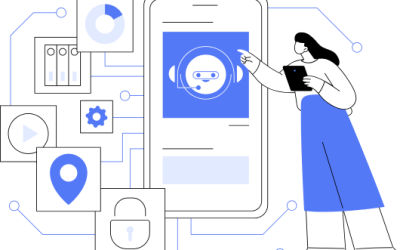When a prospect makes a purchase, whether it is a product or service, they leave the Buyer’s Journey and enter the Customer’s Journey. The Customer’s Journey is their relational experience with you, the business, after the purchase. The goal of this experience is to build loyalty, but it can be challenging when we put so much effort into leading prospects through the Buyer’s Journey.
Recently, we looked at the difference between the Buyer’s Journey and the Customer’s Journey. In our last article, we looked at ways you can use your CRM to guide a prospect through the Buyer’s Journey. Once they buy from you, they are no longer a buyer. They are a customer, so how do you use your CRM to help them move seamlessly from one journey to the next?
To understand this, let’s continue the story about Jeremy and Ann who own a landscaping business. They used their CRM to move the homeowner from awareness to decision in the Buyer’s Journey. The homeowner decided to sign a contract to mow the lawn every other week. Now that the homeowner is a customer, Jeremy and Ann want to nurture the relationship and build loyalty. They do not want to overextend themselves and fall victim to Follow Up Fatigue, and, at the same time, they do not want to forget about their customer.
How can they build customer loyalty with their CRM?
Automate personalized communication
Automation is a key feature with most CRMs, but some businesses do not take the time to set it up. On the other hand, some businesses use it too much and take personalization out of it such as automating responses to customer issues without human follow-up. To build customer loyalty so that the customer does not feel like a number in your system, Jeremy and Ann need to find the balance. Several areas that can be automated include:
- Thank you and appreciation emails
- Special dates such as the customer’s birthday or the anniversary of the day the customer became your client.
- Reassurance that your customer service is available to help them and answer questions.
- Asking for feedback to improve your product or service.
Share relevant product/service content
Jeremy and Ann want their customers to know they do much more than mow lawns. They can use their CRM to send out weekly or monthly email newsletters. The newsletters usually include the following:
- A featured product or service
- A DIY tip to maintain a healthy lawn
- A monthly or seasonal special
- A call to action
They can monitor the activity for each newsletter such as open rate and click-through rate. Each metric can help them know what is important to their customers and helps them curate content that appeals to their customers.
Introduce a referral or incentive program
Customers want to feel valued. When they feel valued, they tell their friends and family. They want others to have the same great experience. Jeremy and Ann decided to set up a referral program through their CRM. The goal of the referral program is to benefit both the customer and the person they refer. With their landscaping, they decided to offer the referring customer a free month of lawnmowing when their referral signs a contract. On top of that, the referral gets the first month free as well.
Conclusion
At the end of the day, Jeremy and Ann are leading their customers through the Customer Journey towards retention and loyalty simply by taking advantage of their CRM’s capabilities. They are reducing Follow Up Fatigue and spending more time building meaningful customer relationships.
Can you relate to Jeremy and Ann? Do you want to grow your business without the stress of Follow Up Fatigue? If so, your CRM is the answer. It is an amazing tool that can help lead customers through the Customer Journey when it is implemented according to your business goals. If you have questions about CRM implementation and how you can align it with your business goals, contact us with the form below or call 301-332-0613.





